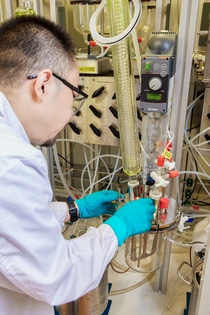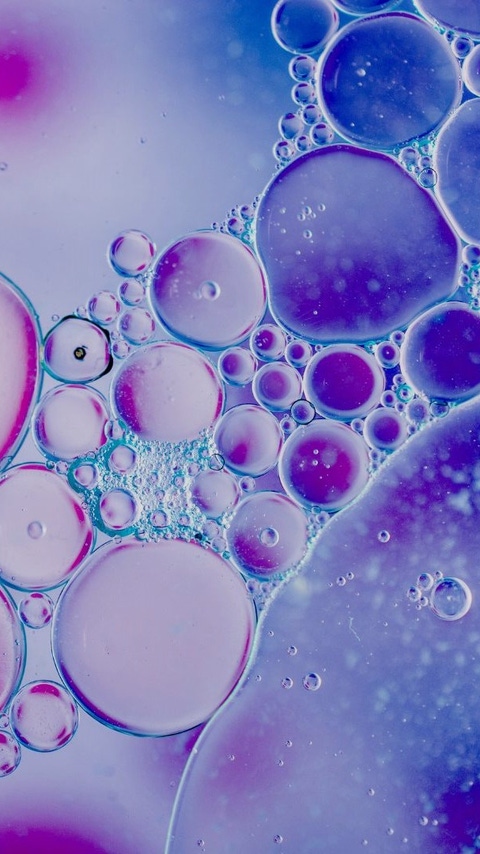They can improve the air we breathe, protect our homes or make facades last: Sustainable emulsion polymers find applications in the construction industry, in adhesives, inks and printing, packaging materials, paper coatings, and a myriad of other segments. We meet the scientist who is deeply committed to conducting comprehensive research on these diverse applications, delving into the medium- and long-term challenges encountered in product development.

Our needs for materials continue to evolve, we are facing new challenges. We need materials that are more cost-effective, longer-lasting, and more environmentally-friendly. This is where the work of dedicated researchers and developers comes in.
To meet these demands, we need to have a more fundamental understanding of emulsion polymerization technology and composite materials. Many fundamental questions have been faced by global players in the industry for even half a century. Finding answers to these questions is very challenging and requires long and hard accumulation.
For example, outdoor coatings need to maintain their original performance for as long as possible in various harsh natural environments. This requires a deep understanding of the degradation mechanisms of emulsion polymers and pigment filler systems under the erosion of ultraviolet light, oxygen, water molecules, salts, and dust. Only then can we effectively avoid resource waste in product development due to blind trial and error. This is also one of our long-standing goals. In addition, the actual natural conditions in different places are different. How to better reflect the actual situation in laboratory simulation research is also an eternal challenge.
What are you working on at BASF?
I am immersed in the world of emulsion polymers and colloid science, a world that cannot be seen with the naked eye: a colloid is 2000 times smaller than a bacterium – and yet it has enormous impact. For example, I work on new emulsion polymers that are hidden heroes on building facades and decorate urban spaces. Our findings lead to more sustainable products that release less harmful substances to the environment, better resistance against dirt, stains and weathering which provides long-term durability and reduces labor cost in renovation.

Where can we find emulsion polymers in our day-to-day life?
Let me start with one key word: “home”. Imagine your home as a sanctuary, a place where you seek comfort and respite from the world. However, this tranquility can be easily disrupted by the unwelcome intrusion of water, leading to damp walls, mold growth, and structural damage. This is where waterproofing emulsion polymers come into play, acting as a shield against moisture damage in the most vulnerable areas of your home: the bathrooms, kitchens, balconies, and basements.
Aqueous exterior wall or facade paints decorate and protect urban spaces. Rain streak marks or snail trails are one of the main early discoloration phenomena in exterior coatings, especially in dark finishes. The uneven vertical shiny stripe marks appear on the coating’s surface after rain, or due to dew formation. Our emulsion polymers ensure coatings that provide resistance against the weathering elements, and long-term aesthetic durability.
Our emulsion polymers are the essential building blocks for a wide range of adhesives that seamlessly integrate into our everyday life. They are the hidden heroes behind the labels on our wine bottles, the decorative films that adorn our glass doors, and the handy sticker notes that keep our tasks organized.

How can emulsion polymers contribute to a more sustainable world?
We spend 90% of our lives indoors, so the quality of our indoor air is crucial for our health. As an important component of coatings, premium quality emulsion polymers can help improve indoor air quality by reducing the presence of volatile organic compounds (VOCs). Using paints with premium emulsion polymers can help create a healthier indoor environment.
As sustainability becomes increasingly important, emulsions are not only expected to reduce their own VOC emissions but also to actively eliminate airborne VOCs and hazardous substances. We've all experienced the lingering odor in newly renovated homes, often caused by formaldehyde. To combat this issue, we've developed a revolutionary emulsion that, when applied to home paints, not only boasts extremely low VOC emissions but also actively and permanently eliminates free formaldehyde from indoor air, making our homes healthier and more sustainable.
